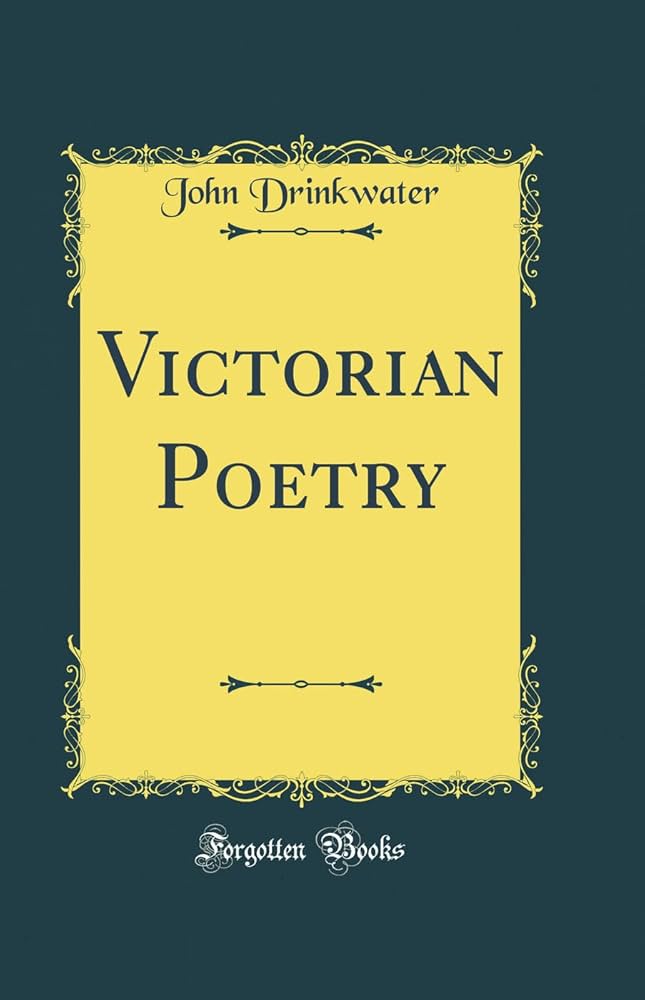
Victorian Poetry: The Victorian era (1837-1901) was a time of strict moral codes, deep religious beliefs, and rapid social change. These elements significantly influenced the poetry of the period, especially in themes of love and loss. Victorian poets often balanced personal emotion with societal expectations, creating poetry that was both passionate and restrained, deeply romantic yet tinged with sorrow.
This guide explores how Victorian poets expressed love and grief, the cultural constraints that shaped their work, and the lasting impact of their poetry on literature.
The Cultural and Moral Landscape of Victorian Poetry

A. The Influence of Victorian Morality
- Strict social codes – Love was often idealized, repressed, or bound by duty.
- Gender roles – Women were expected to be pure, modest, and devoted, while men were seen as rational providers.
- Religious influence – Love and loss were frequently explored through a spiritual lens, often emphasizing eternity and divine reunion.
B. The Romantic Legacy in Victorian Poetry
✔ Victorian poets inherited Romantic ideals (emotion, nature, and individualism) from poets like Wordsworth, Byron, and Keats.
✔ Unlike the Romantics, Victorians often tempered their passion with realism, reflecting duty, loss, and societal limitations.
C. Death and Mourning in Victorian Society
✔ Death was deeply ritualized, with mourning customs dictating dress, behavior, and literature.
✔ Many Victorian poems reflect a fascination with the afterlife, longing for reunion beyond death.
Themes of Love in Victorian Poetry
Victorian poets explored love in ways that reflected their era’s tensions between passion and propriety.
A. Idealized and Spiritual Love
- Love was often depicted as pure, unattainable, or transcendent, reflecting Victorian ideals of virtue.
- Example: Elizabeth Barrett Browning’s Sonnet 43 (“How do I love thee?”)
“How do I love thee? Let me count the ways.
>I love thee to the depth and breadth and height
My soul can reach, when feeling out of sight
For the ends of Being and ideal Grace.”
☞ Browning’s poem elevates love beyond earthly passion, into a spiritual and eternal realm.
B. Love as Longing and Unfulfilled Desire
- Many Victorian poets expressed yearning and separation, often due to social expectations, death, or distance.
- Example: Alfred, Lord Tennyson’s “Maud”
“Come into the garden, Maud,
For the black bat, night, has flown,
Come into the garden, Maud,
I am here at the gate alone.”
☞ The poem’s speaker longs for his beloved, capturing the intensity of desire mixed with melancholy.
C. Forbidden or Tragic Love
- Love was often bound by duty, class divisions, and societal norms, leading to tragic or suppressed romances.
- Example: Christina Rossetti’s “No, Thank You, John”
“You know I never loved you, John;
No fault of mine made me your toast:
Why will you haunt me with a face as wan
As shows an hour-old ghost?”
☞ Rossetti’s poem challenges Victorian gender norms, as the speaker asserts her independence from unwanted love.
Themes of Loss and Mourning in Victorian Poetry
A. Death as an Inevitable and Transformative Force
- Many poets saw death not as an end, but as a transition, often using religious or metaphysical imagery.
- Example: Emily Brontë’s “Remembrance”
“Cold in the earth—and the deep snow piled above thee,
Far, far removed, cold in the dreary grave!”
☞ Brontë expresses deep sorrow for a lost loved one, yet acknowledges the necessity of moving forward.
B. Eternal Love Beyond Death
- Poets often depicted love persisting beyond mortality, reflecting Victorian beliefs in spiritual reunion.
- Example: Dante Gabriel Rossetti’s “The Blessed Damozel”
“The blessed damozel leaned out
From the gold bar of Heaven;
Her eyes were deeper than the depth
Of waters stilled at even.”
☞ The poem depicts a woman waiting for her beloved in heaven, reinforcing the Victorian ideal of love transcending death.
C. Personal Grief and National Mourning
- Many poems dealt with personal and public grief, reflecting both intimate loss and collective national mourning.
- Example: Tennyson’s “In Memoriam A.H.H.” (written after the death of his friend Arthur Hallam)
“Tis better to have loved and lost
Than never to have loved at all.”
☞ Tennyson’s famous lines express both profound grief and the value of having experienced love.
Major Victorian Poets and Their Contributions
A. Alfred, Lord Tennyson (1809-1892)
✔ Themes: Love, loss, memory, national identity.
✔ Famous Works: “In Memoriam,” “Maud,” “The Lady of Shalott.”
B. Elizabeth Barrett Browning (1806-1861)
✔ Themes: Romantic love, devotion, social justice.
✔ Famous Works: “Sonnets from the Portuguese,” “Aurora Leigh.”
C. Robert Browning (1812-1889)
✔ Themes: Dramatic monologues, obsessive love, psychological depth.
✔ Famous Works: “My Last Duchess,” “Porphyria’s Lover.”
D. Christina Rossetti (1830-1894)
✔ Themes: Unrequited love, religious devotion, female independence.
✔ Famous Works: “Goblin Market,” “Remember,” “No, Thank You, John.”
E. Dante Gabriel Rossetti (1828-1882)
✔ Themes: Sensual love, art and poetry, the afterlife.
✔ Famous Works: “The Blessed Damozel,” “Silent Noon.”
Victorian Poetry’s Legacy
A. Influence on Modern Poetry
✔ Victorian poetry bridged Romanticism and Modernism, influencing 20th-century poets like T.S. Eliot and W.B. Yeats.
✔ Themes of repressed desire, existential questioning, and memory remain central to contemporary poetry.
B. Continued Cultural Relevance
✔ Victorian poetry is widely studied in literature courses for its rich language and exploration of human emotion.
✔ Its themes of love and loss remain universal, resonating across different cultures and eras.
Conclusion: The Lasting Impact of Victorian Love and Loss Poetry
Victorian poets navigated the constraints of their era, crafting poetry that balanced passionate love with societal expectations, and deep grief with spiritual hope. Their works continue to captivate modern readers, offering a glimpse into a time where love was often idealized yet deeply personal, and loss was mourned with profound beauty.
Through their poetry, we see the human heart in all its tenderness and tragedy, proving that love and loss remain timeless themes in literature. 💔📜✨







